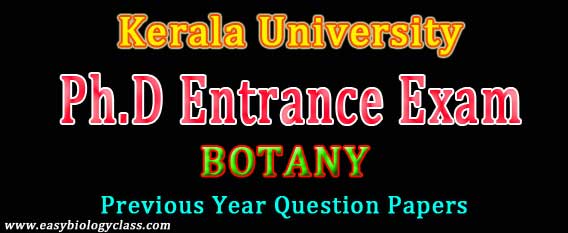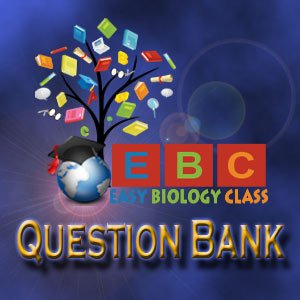
KERALA UNIVERSITY Ph.D. ENTRANCE EXAMINATION
NOVEMBER – 2009
FACULTY OF SCIENCES
BOTANY
Time: 140 Minutes Maximum Marks: 160
Note: Answer any twelve questions from Section B and one question from Section C in the subject concerned. In Section B, each question carries 10 marks. Section C carries 40 marks. In Section B an answer should not exceed 100 words. In Section C, an answer should not exceed 500 words.
SECTION – B
(1). Describe the process of transcription in prokaryotic organisms.
(2). Describe the ultrastructure and functions of the chloroplasts.
(3). What are the different systems of classification? Discuss the merits and demerits of Bentham and Hooker’s System.
(4). Write the botanical name, family and salient features and useful plant part of any five drug yielding plants.
(5). Write short notes on the different types of vectors used in genetic engineering.
(6). What are giant chromosomes? Discuss the significance of polytene chromosomes in the preparation of cytological maps.
(7). Gymnosperms form an intermediate group between the higher cryptogams and angiosperms. Highlight the resemblances and differences between the groups.
(8). What are genetically modified organisms? Give your options on the advantages and disadvantages of GMOs.
(9). Differentiate between oncogenes and tumour suppressor genes.
(10). Describe the structure of the DNA double helix.
(11). Explain the ‘Ecosystem Concept’.
(12). How does the ‘Theory of endosymbiosis’ explain the evolutionary relationship between the cyanobacteria and eukaryotes?
(13). What are transposable genetic elements? How does the process of transition take place?
(14). Describe the inheritance of characters in a dihybrid cross with a suitable example. How is the phenotypic ratio modified in case of complementary gene action?
(15). What are the symptoms exhibited by Down’s syndrome victims? Explain the chromosomal anomaly responsible for the syndrome.
(16). What are the salient features of the family Asteraceae? With the help of diagrams, describe the floral parts of any one plant belonging to the family
SECTION – C
(1). You have completed the chemical profiling of different populations of a particular plant species. One of the populations shows increased levels of the compound of your interest. What are the further steps you will adopt?
(2). A toxic principle in an otherwise important vegetable acts as a deterrent in its wide use. How will you check the activity of the gene/genes involved in the metabolic pathway synthesizing the compound?
(3). While on a plant collection trip to a mountainous terrain you come across a population of wild rice, which is different from the samples you have observed so far in terms of the morphological features. What will you do with collected plant material?
Download this Question Paper as PDF File
Download link is provided below the PDF Preview…
 Loading...
Loading...
Browse more in Easy Biology Class…
Lecture NotesBiology PPTsVideo TutorialsBiology MCQQuestion BankDifference betweenPractical AidsMock Tests (Online)Biology Exams
If you like this post, please COMMENT . . . . (below ↓)
Please Share with your Friends, Relatives, Students and Colleagues…
